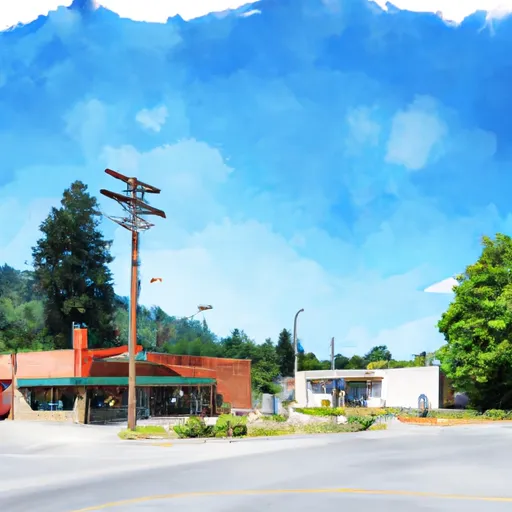-
 Snoflo Premium
Snoflo Premium
Get unlimited access to all our content
With no Ad interruptions! - Start Your Free Trial Login with existing account
Mc-Cleary
Eden Index
Climate
5.6
•
Recreation
4.0
•
Community
1.0
•
Safeguard
3.9/10

McCleary is a small town located in Grays Harbor County, Washington. The climate in McCleary is generally mild, with warm summers and cool winters. The town experiences a significant amount of rainfall throughout the year, making it part of the temperate rainforest region. This wet climate contributes to the lush greenery and beautiful natural landscapes that surround the area.
McCleary is situated near the Chehalis River, which is a vital part of the region's hydrology. The river provides various recreational opportunities such as fishing, boating, and kayaking. Additionally, McCleary is surrounded by forests and parks, offering ample opportunities for hiking, camping, and wildlife viewing. The Chehalis Western Trail, a popular multi-use trail, passes through McCleary, providing opportunities for walking, running, and biking.
Outdoor enthusiasts can also explore the nearby Capitol State Forest, which offers extensive trails for hiking, mountain biking, and horseback riding. The forest is home to diverse wildlife and offers breathtaking views of the surrounding areas. With its abundant natural beauty and recreational opportunities, McCleary is a great destination for those seeking to connect with nature and enjoy the outdoors.
What is the Eden Index?
The Snoflo Eden Index serves as a comprehensive rating system for regions, evaluating their desirability through a holistic assessment of climate health, outdoor recreation opportunities, and natural disaster risk, acknowledging the profound impact of these factors on livability and well-being.
Climate Health Indicator (CHI): 5.6
Mc-Cleary receives approximately
2178mm of rain per year,
with humidity levels near 88%
and air temperatures averaging around
11°C.
Mc-Cleary has a plant hardyness factor of
8, meaning
plants and agriculture in this region tend to thrive here all year round.
By considering the ideal temperature range, reliable water supplies, clean air, and stable seasonal rain or snowpacks, the Climate Health Indicator (CHI) underscores the significance of a healthy climate as the foundation for quality living.
A healthy climate is paramount for ensuring a high quality of life and livability in a region, fostering both physical well-being and environmental harmony. This can be characterized by ideal temperatures, reliable access to water supplies, clean air, and consistent seasonal rain or snowpacks.
Weather Forecast
Streamflow Conditions
Washington Coastal
Area Rivers
Washington Coastal
Snowpack Depths
Washington Coastal
Reservoir Storage Capacity
Washington Coastal
Groundwater Levels
Recreational Opportunity Index (ROI): 4.0
The Recreational Opportunity Index (ROI) recognizes the value of outdoor recreational options, such as parks, hiking trails, camping sites, and fishing spots, while acknowledging that climate plays a pivotal role in ensuring the comfort and consistency of these experiences.
Access to outdoor recreational opportunities, encompassing activities such as parks, hiking, camping, and fishing, is crucial for overall well-being, and the climate plays a pivotal role in enabling and enhancing these experiences, ensuring that individuals can engage in nature-based activities comfortably and consistently.
Camping Areas
| Campground | Campsites | Reservations | Toilets | Showers | Elevation |
|---|---|---|---|---|---|
| Sherman Valley- State Forest | 7 | 379 ft | |||
| Porter Creek- State Forest | 16 | 294 ft | |||
| Oxbow Rustic | 20 | 525 ft | |||
| Brown Creek | 22 | 563 ft | |||
| Schafer State Park | 42 | 127 ft | |||
| Potlatch State Park | 73 | 88 ft | |||
| North Creek- State Forest | 5 | 309 ft |
Catastrophe Safeguard Index (CSI):
The Catastrophe Safeguard Index (CSI) recognizes that natural disaster risk, encompassing floods, fires, hurricanes, and tornadoes, can drastically affect safety and the overall appeal of an area.
The level of natural disaster risk in a region significantly affects safety and the overall livability, with climate change amplifying these risks by potentially increasing the frequency and intensity of events like floods, fires, hurricanes, and tornadoes, thereby posing substantial challenges to community resilience and well-being.
Community Resilience Indicator (CRI): 1.0
The Community Resilience Indicator (CRI) recognizes that education, healthcare, and socioeconomics are crucial to the well-being of a region. The CRI acknowledges the profound impact of these elements on residents' overall quality of life. By evaluating educational resources, healthcare accessibility, and economic inclusivity, the index captures the essential aspects that contribute to a thriving community, fostering resident satisfaction, equity, and social cohesion.

